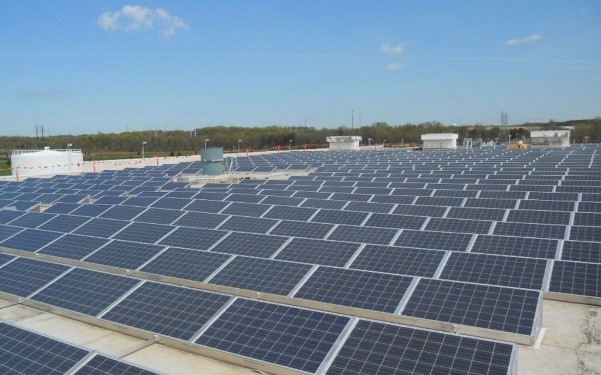Quick answer:
- Northern Hemisphere (Spain): orient panels to true south.
- Base tilt: ≈ site latitude.
- Seasonal adjustments: summer latitude − 10…15°; winter latitude + 10…15°.
- Tolerable deviations: southeast/southwest with moderate losses; east/west can reduce annual production by ~20–30% compared to true south.
Why orientation and tilt matter?
In photovoltaics, the orientation (azimuth) and tilt determine how much plane-of-array irradiance the solar panel captures throughout the day and year. These two parameters directly affect annual energy output (kWh). Accurate design translates into more hours near peak power and a faster return on investment. Conversely, incorrect orientation can cause losses of 10–30% without any malfunction.
Optimal orientation is not universal: it depends on latitude, seasonal solar trajectory, consumption profile, and site constraints (roof, obstacles, wind, regulations).
Rule by hemisphere
- Northern Hemisphere (Spain): orient to true south for maximum annual production.
- Southern Hemisphere: orient to true north.
Note: use geographic south/north, not magnetic south indicated by a compass.
How to choose solar panel tilt: start with latitude?
Practical rule: set tilt close to the site latitude for balanced annual performance. Adjust according to goal:
- Annual optimization (global): latitude − 10…15° favors high irradiance months (summer, higher sun).
- Winter optimization: latitude + 10…15° compensates for low sun and thicker atmosphere.
Examples:
- Barcelona (~41.4°N): annual 32–35°; summer 25–30°; winter 50–55°.
- Seville (~37.4°N): annual 28–30°; summer 22–25°; winter 45–50°.
For pitched roofs, following the existing slope is usually most cost-effective: deviations of a few degrees from annual optimal typically cause <5% losses, insufficient to justify complex mounting structures.
How much deviation is acceptable without losing too much performance?
Not all deviations penalize equally:
- Southeast / Southwest (±45°) from south: moderate annual losses 10–15%.
- East / West (±90°): annual production may drop ~20–30%.
Optimize by hours: east vs. west for self-consumption
If the goal is not maximum annual output but matching generation to peak hours, you can orient:
- Slightly east: boosts morning (early shops, morning processes).
- Slightly west: boosts afternoon (households with evening consumption, offices).
Some annual kWh are sacrificed, but savings are maximized by reducing grid consumption during your high-demand hours.
Shading, diffuse light, and temperature: factors affecting “best” orientation
- Shading: small shadows on a string can cause large losses due to series behavior of cells. Prioritize removing shadows (relocating, adjusting azimuth or spacing) before chasing theoretical optimal angle. Shadows create hot cells on solar panels.
- Diffuse irradiance: in cloudy climates orientation is slightly less critical, as diffuse light gains weight; still, south remains annual reference.
- Temperature: modules lose 0.3–0.5% power/°C above 25 °C. Slightly increasing tilt and improving rear ventilation helps reduce thermal losses.
Bifacial panels and albedo: what changes and what doesn’t
Cardinal orientation does not change (south in Northern Hemisphere), but tilt and clearance become more important to improve bifacial gain (rear-side generation). High-albedo environments benefit from slightly higher angles and more clearance, generating more energy from the panel’s rear.
Recommended tilt table for Spanish cities
Criteria:
- Balanced annual: latitude − 10…15° (rounded).
- Summer: latitude − 15…20°.
- Winter: latitude + 10…15°.
- Azimuth: true south unless targeting specific hours.
Frequently Asked Questions
Magnetic or geographic south?
Always geographic south; compass points to magnetic south and may introduce several degrees of error.
How much loss if oriented east or west?
Annually, compared to south, expect ~20–30% drop depending on latitude and climate.
Minimum reasonable tilt on flat roofs?
≥10–15° helps water runoff, reduces soiling, and improves rear ventilation.
Does it make sense to deviate from south for self-consumption?
Yes. Slight east or west can increase savings if it matches your peak demand hours, even if total annual kWh decreases.




